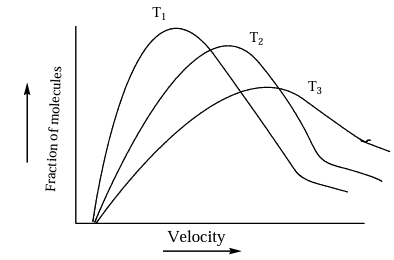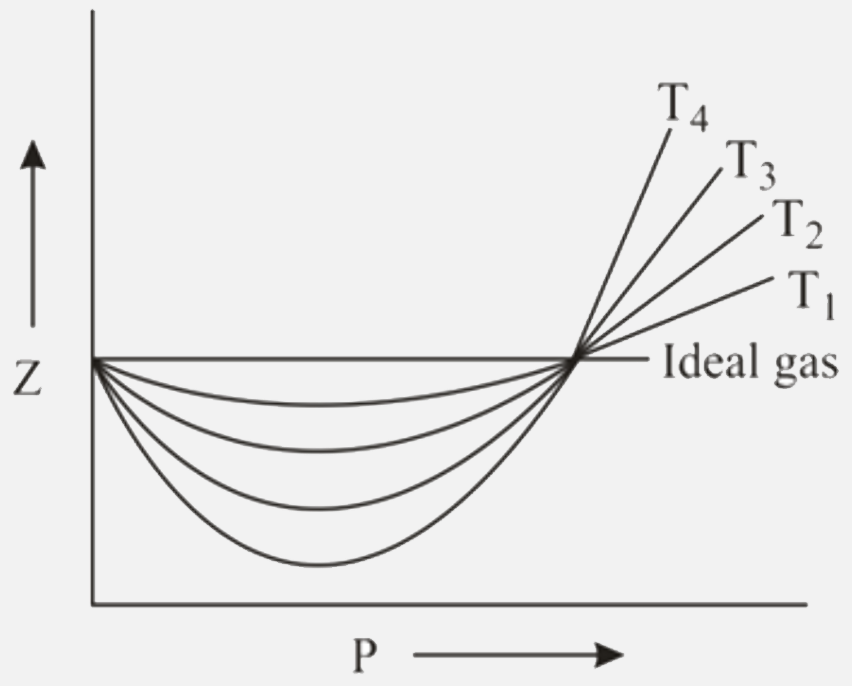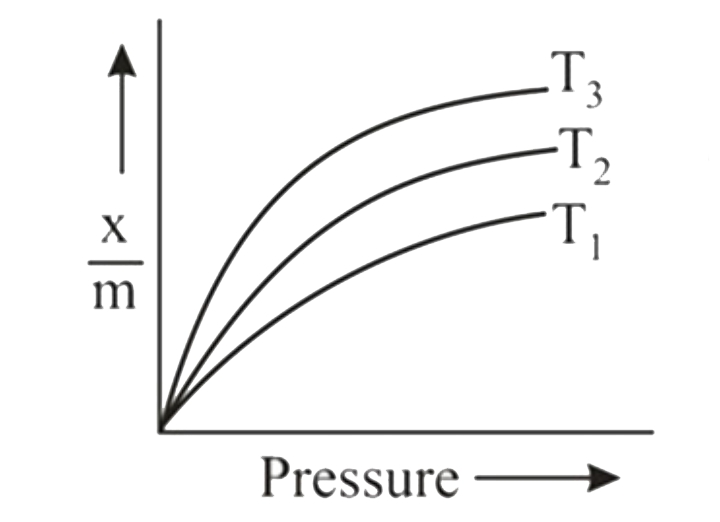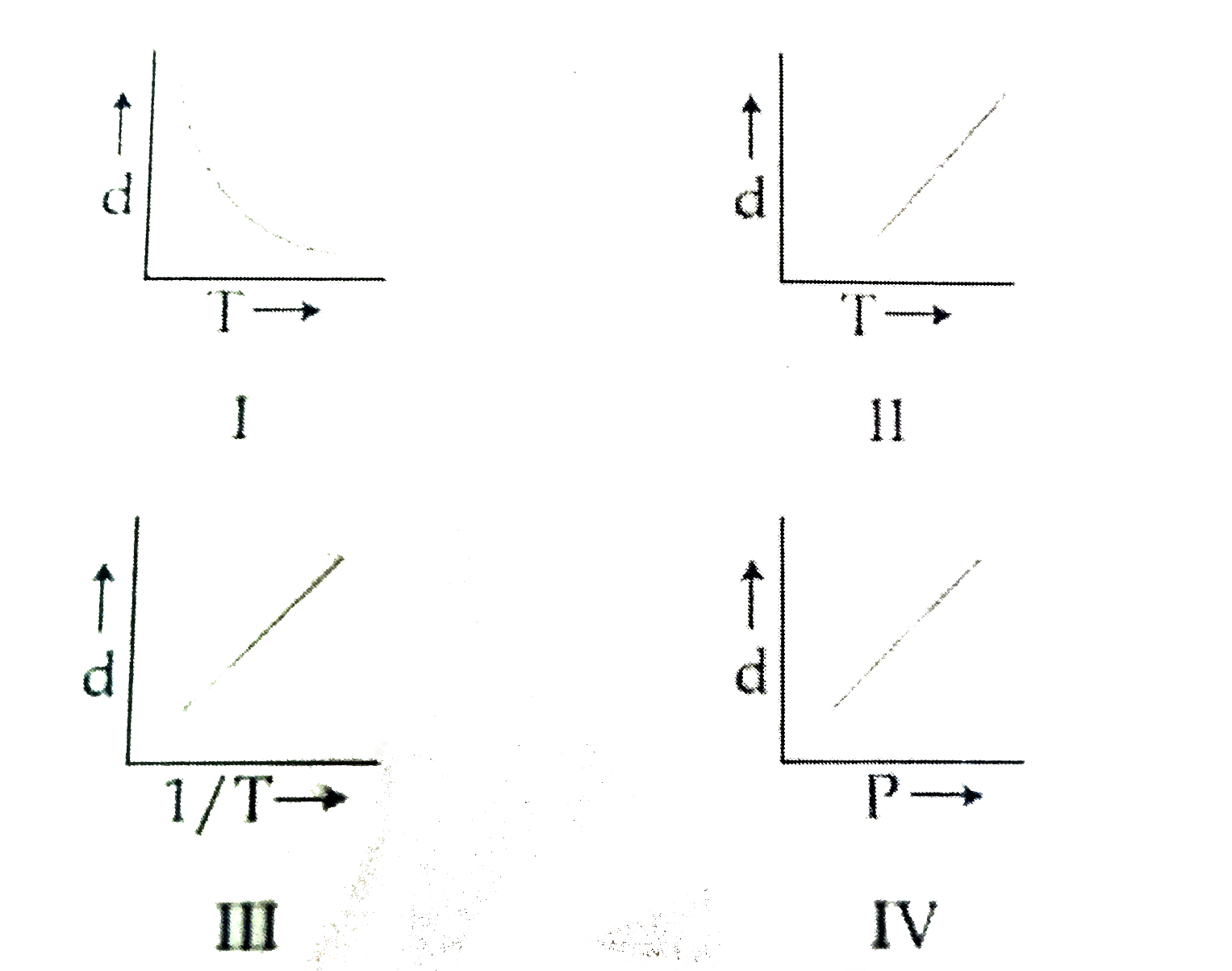Which of the following is correct for critical temperature ?
It is the highest temperature at which liquid and vapour can coexist
Boyond this temperature, there is no distinction between the two phases and a gas cannot be liquefied by compression.
At this temperature, the gas the liquid phases have different critical densities
All are correct
The correct Answer is:a,b
To solve the question regarding the critical temperature, we need to understand the concept of critical temperature and analyze the given options. Here’s a step-by-step breakdown of the solution:
Step 1: Define Critical Temperature
Critical temperature (Tc) is defined as the highest temperature at which a substance can exist in the liquid state. Above this temperature, the substance cannot be liquefied, regardless of the pressure applied.
Hint: Remember that critical temperature is the maximum temperature for liquid existence.
Step 2: Analyze the Behavior of Molecules
At temperatures below the critical temperature, the molecules are close enough for intermolecular forces to act effectively, allowing the substance to exist in both liquid and vapor phases. As the temperature increases and approaches the critical temperature, the kinetic energy of the molecules increases, making it harder for these intermolecular forces to hold the molecules together in a liquid state.
Hint: Consider how molecular kinetic energy affects phase states.
Step 3: Identify the Characteristics Above Critical Temperature
Above the critical temperature, the distinction between liquid and gas phases disappears. The substance enters a supercritical state where it exhibits properties of both a liquid and a gas. In this state, the gas cannot be liquefied by pressure alone.
Hint: Think about the implications of exceeding critical temperature on phase distinction.
Step 4: Evaluate the Given Options
1. Option A: "It is the highest temperature at which liquid and vapor can coexist." - This is correct.
2. Option B: "Beyond this temperature, there is no distinction between two phases and gas cannot be liquefied by compression." - This is also correct.
3. Option C: "At this temperature, the gas and liquid phases have different critical densities." - This is incorrect because at the critical point, the densities of the liquid and gas phases become equal.
4. Option D: (not provided in the transcript but assumed to be incorrect based on the context).
Conclusion
The correct options regarding critical temperature are A and B.
Final Answer: The correct options are A and B.
---
Critical temperature (Tc) is defined as the highest temperature at which a substance can exist in the liquid state. Above this temperature, the substance cannot be liquefied, regardless of the pressure applied.
At temperatures below the critical temperature, the molecules are close enough for intermolecular forces to act effectively, allowing the substance to exist in both liquid and vapor phases. As the temperature increases and approaches the critical temperature, the kinetic energy of the molecules increases, making it harder for these intermolecular forces to hold the molecules together in a liquid state.
Above the critical temperature, the distinction between liquid and gas phases disappears. The substance enters a supercritical state where it exhibits properties of both a liquid and a gas. In this state, the gas cannot be liquefied by pressure alone.
1. Option A: "It is the highest temperature at which liquid and vapor can coexist." - This is correct.
2. Option B: "Beyond this temperature, there is no distinction between two phases and gas cannot be liquefied by compression." - This is also correct.
3. Option C: "At this temperature, the gas and liquid phases have different critical densities." - This is incorrect because at the critical point, the densities of the liquid and gas phases become equal.
4. Option D: (not provided in the transcript but assumed to be incorrect based on the context).
The correct options regarding critical temperature are A and B.
Topper's Solved these Questions
- GASEOUS STATEBOOK - NARENDRA AWASTHI ENGLISHCHAPTER - GASEOUS STATEEXERCISE - Match the Column
7 Videos
- GASEOUS STATEBOOK - NARENDRA AWASTHI ENGLISHCHAPTER - GASEOUS STATEEXERCISE - Assertion-ReasonType Questions
16 Videos
- GASEOUS STATEBOOK - NARENDRA AWASTHI ENGLISHCHAPTER - GASEOUS STATEEXERCISE - Level 3 Passage 3
4 Videos
- ELECTROCHEMISTRYBOOK - NARENDRA AWASTHI ENGLISHCHAPTER - ELECTROCHEMISTRYEXERCISE - Subjective problems
14 Videos
- IONIC EEQUILIBRIUMBOOK - NARENDRA AWASTHI ENGLISHCHAPTER - IONIC EEQUILIBRIUMEXERCISE - Subjective problems
1 Videos
Similar Questions
In the following graph of Maxwell - Boltzmann distribution of molecular velocities . Which of the following is the correct order of temperature ?

View SolutionCompressibility factor (Z) is plotted against pressure at different temperature for same gas

Which of the following is the correct order of temperature shown in the above plot ?
View Solution
Knowledge Check
Which of the following statements is correct with respect to the effect of temperature on rate of respiration ?
ARate of respiration increases with an increase in temperature from 0∘C to 30∘CBRate of respiration doubles for every 10∘C rise in temperature, thus temperature co-efficient (Q10) for respiration is 2.CAt very high temperatures such as 50∘C or more, rate of respiration decreases due to enzymatic degradation.DAll of these
Arrange the following gases in order of their critical temperature.
NH3,H2O,CO2,O2
View SolutionWhich one of the following gases has the highest critical temperature ?
View SolutionConsidering the graph, which of the following gases have the highest critical temperature Tc?

View SolutionThe variation of extent of adsorption with pressure at a given constant temperature is given in following figure

Which of the following relation between temperature of isotherms is correct ?
View Solutionwhich one of the following graph is not correct for ideal gas ?

d=density ,P=pressure,T=Temperature
View SolutionWhich of the following is a correct plot of the volume of fixed amount of ideal gas as a function of temperature (at constant pressure)
View SolutionWhich of the following shows correct relation between volume and temperature at constant pressure for a given amount of gas
View Solution
